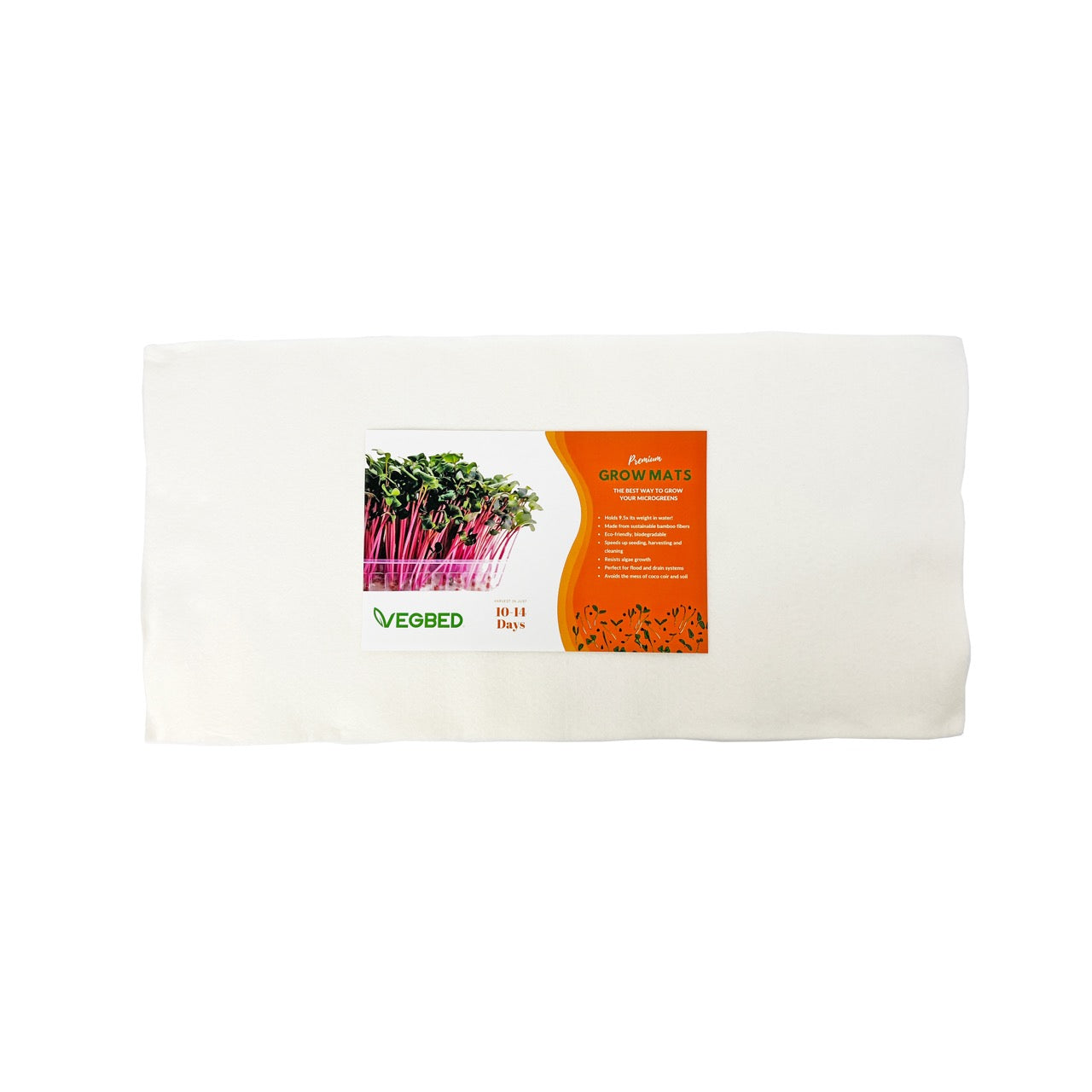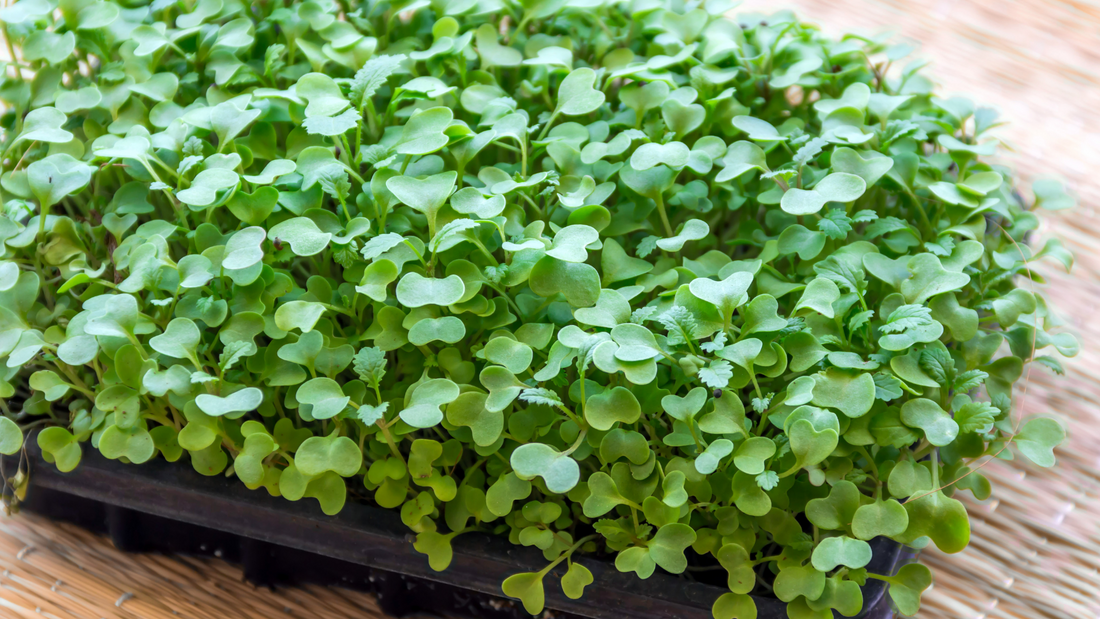Mustard, a staple in kitchens worldwide, has been valued for its flavor and nutritional benefits for centuries. From the seeds that spice up our condiments to the tender microgreens that elevate our salads, mustard offers a versatile and healthful addition to your diet.
Recently, there has been a notable surge in interest surrounding mustard, attributed to various factors highlighting its significance. In this comprehensive guide, we'll explore the journey of mustard from seed to microgreen, highlighting its benefits, culinary uses, and how you can grow your mustard microgreens at home.
Why Mustard is Trending
The sudden noise around mustard can be linked to several key factors:
-
Health Trends: Increasing awareness of the nutritional benefits of mustard seeds and greens has positioned them as a valuable addition to health-centric diets. Studies showcasing their antioxidant properties and vitamin content have sparked interest among health enthusiasts.
-
Culinary Spotlight: Mustard has gained attention in the culinary world, with chefs and food influencers showcasing its versatility in various dishes. Its unique flavor profile makes it a favorite in both traditional and modern cuisines.
-
Agricultural News: Innovations in mustard cultivation, including sustainable farming practices and new varieties, have been highlighted in agricultural news, drawing interest from growers and consumers alike.
-
Market Changes: Recent developments in the mustard market, such as product launches or price fluctuations, have prompted increased search activity as businesses and consumers seek information.
-
Viral Content: Social media platforms have amplified mustard's popularity through viral content, whether it's creative recipes or health tips involving mustard.
-
Cultural or Seasonal Events: Mustard is often associated with seasonal dishes and cultural events, contributing to periodic spikes in interest.
The Origins and Varieties of Mustard
Mustard belongs to the Brassicaceae family, which includes cabbage, broccoli, and kale. Its origins can be traced back to ancient civilizations in Asia and Europe, where it was prized for its culinary and medicinal properties. Today, mustard is cultivated globally, with several varieties available for diverse applications.
Common Varieties:
-
Yellow Mustard (Sinapis alba): Known for its milder flavor, yellow mustard seeds are commonly used in American mustard condiments.
-
Brown Mustard (Brassica juncea): Brown mustard has a more pungent taste and is often used in Dijon and whole-grain mustards.
-
Black Mustard (Brassica nigra): This variety provides intense heat and is popular in Indian cuisine.

Nutritional and Health Benefits of Mustard
Mustard seeds and greens are packed with nutrients contributing to a healthy diet. They are rich in antioxidants, vitamins, and minerals, offering a range of health benefits:
-
Antioxidant Powerhouse: Mustard seeds contain high levels of glucosinolates, compounds with antioxidant properties that help protect cells from oxidative stress.
-
Rich in Vitamins and Minerals: Mustard greens and seeds are excellent sources of vitamins A, C, and K, as well as minerals like calcium, magnesium, and potassium.
-
Digestive Aid: The fiber content in mustard greens supports healthy digestion and can help prevent constipation.
-
Anti-Inflammatory Properties: The compounds in mustard are known to reduce inflammation, potentially benefiting conditions like arthritis.
Culinary Uses of Mustard
Mustard's versatility in the kitchen is unmatched. From seeds to greens, this plant can enhance a variety of dishes with its unique flavor profile:
-
Mustard Seeds: Used whole, crushed, or ground, mustard seeds add a spicy kick to pickles, sauces, and curries. They are a key ingredient in spice blends like garam masala.
-
Mustard Greens: These can be sautéed, steamed, or added raw to salads and sandwiches, offering a peppery flavor similar to arugula.
-
Mustard Condiments: Mustard paste, made from ground seeds mixed with water, vinegar, and other spices, is a staple in dressings, marinades, and sandwich spreads.
Growing Mustard Microgreens
Mustard microgreens are young, tender shoots harvested just after the first leaves develop. They are easy to grow and pack a nutritional punch, making them an excellent choice for home gardeners and culinary enthusiasts.
Steps to Grow Mustard Microgreens:
-
Select Your Seeds: Choose organic mustard seeds from a reputable supplier to ensure quality and germination success.
-
Prepare Your Growing Medium: Use a shallow tray filled with a moistened growing medium, such as soil or a hydroponic mat. Vegbed’s bamboo grow mats are a sustainable option for hydroponic setups.
-
Sow the Seeds: Evenly distribute the mustard seeds over the surface of the growing medium. Gently press them into the surface to ensure good contact.
-
Water and Cover: Lightly mist the seeds with water and cover the tray with a lid or plastic wrap to maintain humidity.
-
Germination and Growth: Place the tray in a warm, dark location for 2-3 days until the seeds germinate. Once sprouted, move the tray to a bright area with indirect sunlight or under grow lights.
-
Harvesting: When the microgreens are about 2-3 inches tall, typically within 7-10 days, they are ready to harvest. Use scissors to snip the greens just above the soil line.
Incorporating Mustard Microgreens into Your Diet
Mustard microgreens offer a concentrated source of nutrients and a spicy, mustard-like flavor that can enhance a wide range of dishes:
-
Salads: Add a handful of mustard microgreens to salads for a peppery twist and an extra boost of nutrition.
-
Sandwiches and Wraps: Use microgreens as a fresh, flavorful layer in sandwiches and wraps.
-
Garnishes: Top soups, omelets, and grilled dishes with mustard microgreens for added flavor and visual appeal.
-
Smoothies: Blend a small amount of microgreens into smoothies for a nutritious addition without overpowering the other flavors.
Sustainability and Home Gardening
Growing mustard and mustard microgreens at home promotes sustainability by reducing reliance on store-bought produce and minimizing packaging waste. Home cultivation allows you to enjoy fresh, pesticide-free greens year-round, contributing to a healthier diet and environment.
Conclusion
Mustard and its vibrant microgreens offer a wealth of culinary possibilities and health benefits. By incorporating mustard into your diet, you can enjoy its rich flavors and nutritional advantages. Whether you're a seasoned gardener or new to growing your food, mustard microgreens are an easy and rewarding crop to cultivate.
At Vegbed, we're committed to supporting sustainable gardening practices and providing high-quality products to help you succeed in your growing endeavors. Explore our range of eco-friendly growing solutions and start your microgreens journey today.



